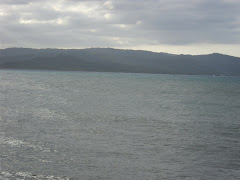Recently, August 17 -21, 2010, the University of the West Indies hosted the Inaugural Rastafari Studies Conference under the theme "Negotiating the African Presence: Rastafari Livity and Scholarship". The Conference highlighted the 50th anniversary of the publication of the Report on the Rastafari movement in Kingston, Jamaica which was written by M.G. Smith (now deceased), Rex Nettleford (also deceased) and Roy Augier.
I have been interested in Rastafari from a very young age and Rastafari, to my mind, is a very controversial religion in and of itself. From my brief reading of the Report many many years ago, it states that the Rastafari Brethren are a very heterogeneous group and hold only two beliefs in common: 1) Rastafari (ie. Haile Selassie) is the living God, and 2) Salvation can come to black men only through repatriation to Africa. The Report states that "...on all other matters the opinions of the brethren vary as widely as the opinions of the rest of the population". The Report goes on to tell us that some Rastafarians wear beards while others do not; and only a small minority of them wear the locks. Some are men of highest moral fibre, while at the other extreme some are men of crime and violence. Some smoke ganja while others abhor it. Some are excellent workmen, while others are lazy and avoid work at all cost.
The Report, written fifty years ago also pointed out that Rastafari is very disorganised and lacking in leadership. There is no leader or group of leaders who can speak for the movement as a whole or define its doctrines. This is still the case today. At the Opening Ceremony of the Conference on Tuesday August 17, 2010, there was a variety of Rastafarians present. Quite of few of them were given the opportunity to bring greetings. This was a very entertaining aspect of the programme as some purported for repatriation while others pushed for reparation. Some said "peace and love" while others from the audience shouted "peace and love can't buy food". Some hailed Haile Selassie I as god, yet others hailed Je-sus and yet still others hailed Marcus Mosiah Garvey as the "Black Je-sus" and prophet.
According to Noel Leo Erskine in his book "From Garvey to Marley", the twin concepts of Haile Selasie as god and the redemption of black people have distinguished Rastafari from other Afro-Caribbean movements that have sought to promote an awareness of black consciousness in the Caribbean. For the Rasta man or woman, the ultimate evil is 'Babylon' and here 'Babylon' represents the oppressor or all oppressive sources which could range from racism, lack of employment, injustice, the police's response to their smoking of the herb otherwise known as ganja.
In going back to the study however, it was because the Rastas in Jamaica were so misunderstood (I think this is still true today) and so mistreated that they asked for a study to be done to show the Jamaican government that they were not a set of disruptive 'raggamuffins'. "The study not only revealed the socio-economic conditions of the movement to the general public, but also, for the first time, articulated the history and doctrine of the movement. The Report found that the vast majority of Rastafari brethren are peaceful citizens who do not believe in violence" (Erskine quoting Bennett and Sherlock).
Professor Rex Nettleford gave an excellent overview of the position of the Rastafari movement in society in his book Mirror Mirror when he pointed out that there were vast cleavages in the Jamaican society, many of which were caused by the colonial education system. He explained that the system trained the middle class who had matriculated through the secondary school system, to view Jamaica through Eurpoean eyes. This placed the middle class on a collision course with Rastafari who viewed life through Afrocentric lenses. It was the University Report which helped middle class Jamaica to see that Rastas were not as unpatriotic as they had originally thought. The desire of the Rastas to repatriate to Ethiopia was presented as not un-Jamaican but rather was more likened to the migration of middle class Jamaicans in search of their destinies. I should say here that after the report was written a number of middle class Jamaicans became Rastas themselves.
The controversies of Rastafari are still evident today or even more so. For in Rastafari there are so many different sects and sub-sects representing varying views. This disparity causes the the movement to be viewed as ludicrous or even senseless and a lot of the middle class who had become a part of the movement in the 60s and 70s have now pulled away saying that the movement served its purpose then but many of them still hold on to the ideologies concerning the advancement for the blackman.
Wednesday, August 18, 2010
Subscribe to:
Post Comments (Atom)





No comments:
Post a Comment